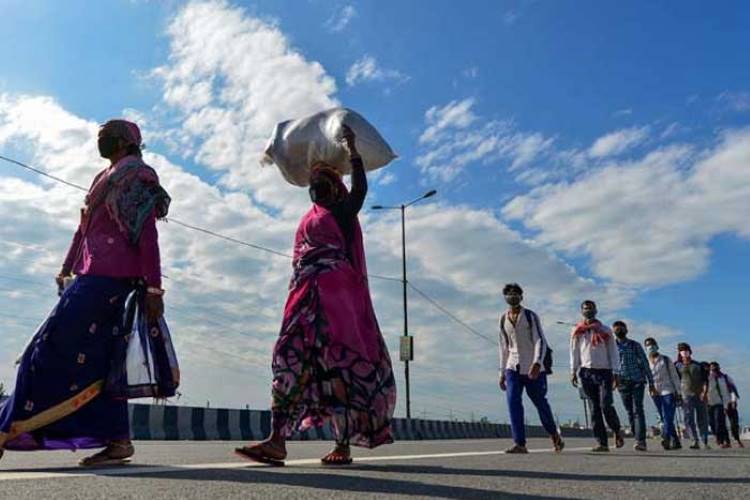
By Susmita Dasgupta
The sight of lakhs of migrant workers heading home by foot, covering distances that only long-distance express trains cover, with children and their life-time possessions, brings back the memories of the Partition of 1947. The exodus of the penniless, hungry millions that followed the announcement of the nation-wide lockdown speaks volumes about the enormous chinks in our economy and polity.
Only a while ago, the government was trying to include each and every Indian in the Aadhaar system, so much so that one could not be cremated without this biometric identity. An effort is on to track citizens at least three generations into their past, yet when the lockdown was announced the government didn’t have the benefit of this huge database to trace migrant workers.
READ: Impoverished farmer and high product retail prices the new normal
The migrant workers, most of whom are employed in the construction sector, are an invisible lot. They are invisible because they stay on site and hence perpetually nomadic. When the contractors disappear, their food also disappears. Charity organizations have long tried to address the issues of education and health of the families of construction workers that are always on the move. Another large chunk of migrants works in the hotel industry and retail services.
The fallout of this long walk is that it will create panic among the workers, most of whom may never return. They will try to stick around in their villages, causing pressure on resources such as land and water. As the flow of workers from villages to construction sites dries up, the wages may rise substantially. This will pave the way for the introduction of technologies. Assembly line production, like in the case of garments, will have to introduce new technology if workers have to be seated 2 metres apart. This means the design of the machines will have to be changed and workers reduced if the factory space cannot be expanded.
READ: Covid-19: Government should extend the lockdown for another five weeks
For the construction sector, labour-saving practices will be used, which would totally reorient the technology of construction towards prefabs, light steel framing, automated winches to carry material and even robotics. In short, the focus of the industries will be on technological modernisation. This will be a huge challenge for construction companies, as many would die because of their failure to adapt to new ways of working. The worst affected will be smaller builders of standalone properties, who would face difficulties in obtaining workforce.
Charities have stepped in to feed the poor, especially those who have fallen into poverty due to the prolonged lockdown. While these are very important things to do, one must observe the other source of rural distress that portends a famine. This is the piling of unsold stocks of agri commodities, namely fruits, vegetables, nuts, roots, jaggery, silkworms and so on. Not only is there a loss of the current income but there is also the destruction of working capital for the next season. The last is a major cause of concern.
READ: Coronavirus and capitalism’s hour of crisis
For these problems, there is a solution that is already in operation in many parts of the country — food supplies in the close vicinity of the village. Surplus stocks can be used to feed the community and workers can cart small quantities of produce to neighbourhoods nearby for sale. There can be door-to-door sale of vegetables, cereals and surplus from the free rations. Rather than seeking large charities through the social media, it is better to invoke these village relationships, create structures of social security within the community and shorten the distances that the produce needs to travel.
Factories can be brought to the worker instead of bringing workers to factories. It will be a good idea to create infrastructure for the production of basic essentials within the villages. Items such as basic chemicals, hand sanitizers, ball pens, tailoring, stationery items and footwear can be produced locally. The village can be the focus of the economy. This will benefit when the society fights disasters, floods, quakes, cyclones and pandemics.
(Dr Susmita Dasgupta is the joint chief economist with the economic research unit of the joint plant committee of the steel ministry, government of India. She is the author of Economics of the Indian Steel Industry published in 2017.)
